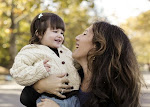skip to main |
skip to sidebar
SSLF HERE!
Hello Blueprints!
This is an easy, sunny-day-art-project you can use to preserve any special remnants from a loved one’s belongings. Buttons, lace, photos(print a photo on transparency plastic!!), matches, feathers, lock of hair, you can spell with alphabet pasta, leaves, flowers…...Use within 6 months for best printing results ~ Frame it, make a pillow, quilt, eye pillow, bean bag!
I'd love a photo of your creation when finished! Susarama@gmail.com
When you are ready to create, open the black bag, the fabric will appear yellow/green or greyish blue. (The colored fabrics will look like a dulled version of the color). The final blue color will not be visible until the material has been exposed, rinsed and dried The fabrics are fully treated which means both sides have the cyanotype chemicals and you can print on either side. NON TOXIC!
Blueprinting Instructions
1. Prepare design indoors out of direct sunlight.
2. Pin material to cardboard or foam pinning board.
3. Arrange design objects on material.
4. Pin design objects in place or cover with a piece of safety glass (non UV blocking - open up and use small glass from an old frame).
5. Take prepared fabric outside and place directly facing the sun.
6. Exposure time is approximately• 5-10 minutes on a warm, sunny day• 15-30 minutes on cooler days
7. Remove from direct sunlight and then remove design objects.
8. Rinse thoroughly in plain water until water runs clear.
9. (Optional) Add a teaspoon of hydrogen peroxide to the rinse water . This will cause the blue color to immediately deepen to its final color - otherwise the blue color will deepen over a period of 24 hours.10. Lay flat, OUT of direct sunlight, until dry.
HAVE FUN!!
Tips for Printing
Almost anything can be used to create an image. Whatever is covered and does not receive exposure to UV light will remain the color of the fabric or paper after exposure and rinsing with water. Only the uncovered areas will receive the UV light and will turn blue after exposure and rinsing with water. The more opaque the object is - the better it will block the UV light exposure and a very transparent object will allow some UV light through and will allow the material to slightly expose. You can create photo negatives by printing or drawing images on clear transparency sheets. You will lay the transparency sheet on the piece of paper or fabric and then place a piece of non UV blocking glass or acrylic on top of the transparency to hold the transparency in tight contact with the treated fabric or paper.
Do not get fabric wet before or during exposure. Make sure your hands are dry before handling the fabric. Also be sure that what you place on the fabric (and what you place the fabric on) to expose is dry.
Unexposed fabric CAN be ironed before exposure. Use a DRY iron that does not spit or leak water. Use a cotton or silk setting (depending on fabric to be ironed). Iron on wrong side of fabric and/or use a pressing cloth.
A small amount of 3% Hydrogen Peroxide (1 teaspoon H.P. to one gallon water) can be used in the first rinse water. This will cause the blue color to immediately deepen to it's final color.
RINSE FABRIC THOROUGHLY and DRY OUT OF DIRECT SUNLIGHT
***** Important Care Instructions *****
• Blueprints are photographs – not dyes.• The image is permanent, but the blue color will change to yellow if washed with phosphates, soda, borax or bleach.• To preserve the original blue color – hand wash using only a small amount of NON-PHOSPHATE liquid soap. Rinse thoroughly and dry flat.• Dry cleaning is NOT recommended• Blueprints can be ironed using a dry iron. The blue will change slightly while warm and return to the original color when cool.





